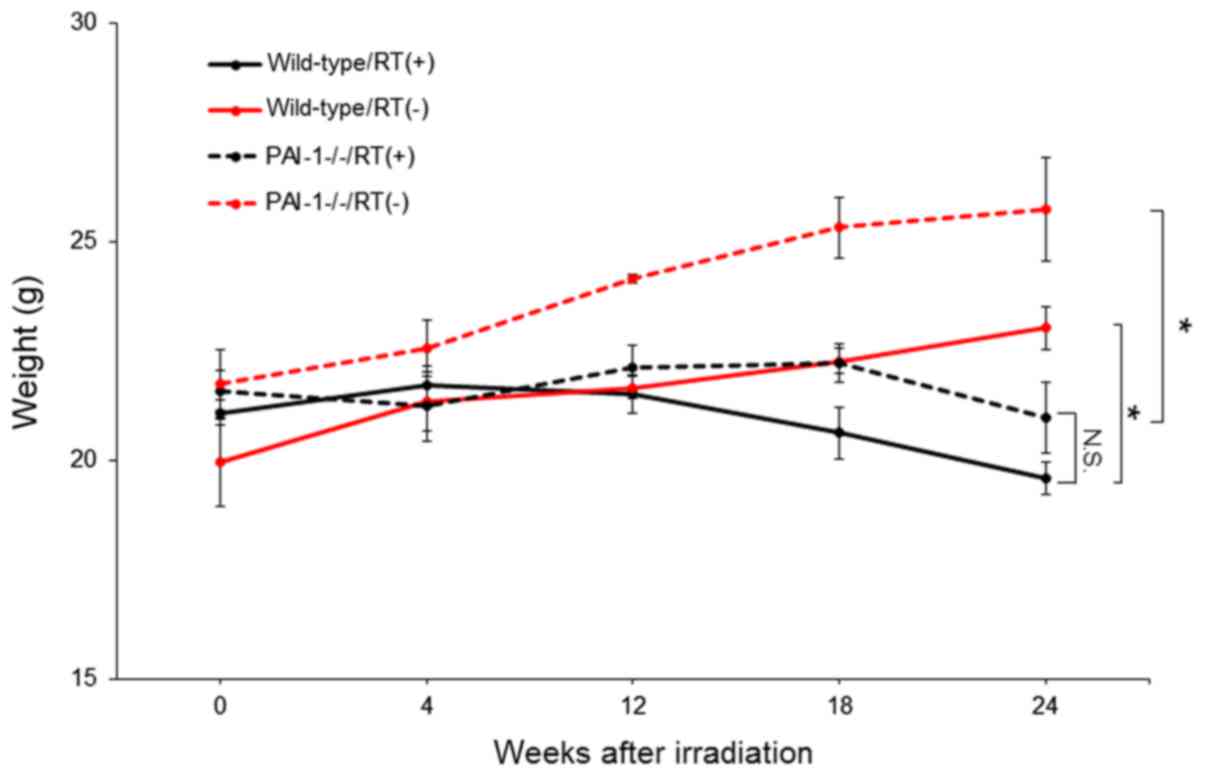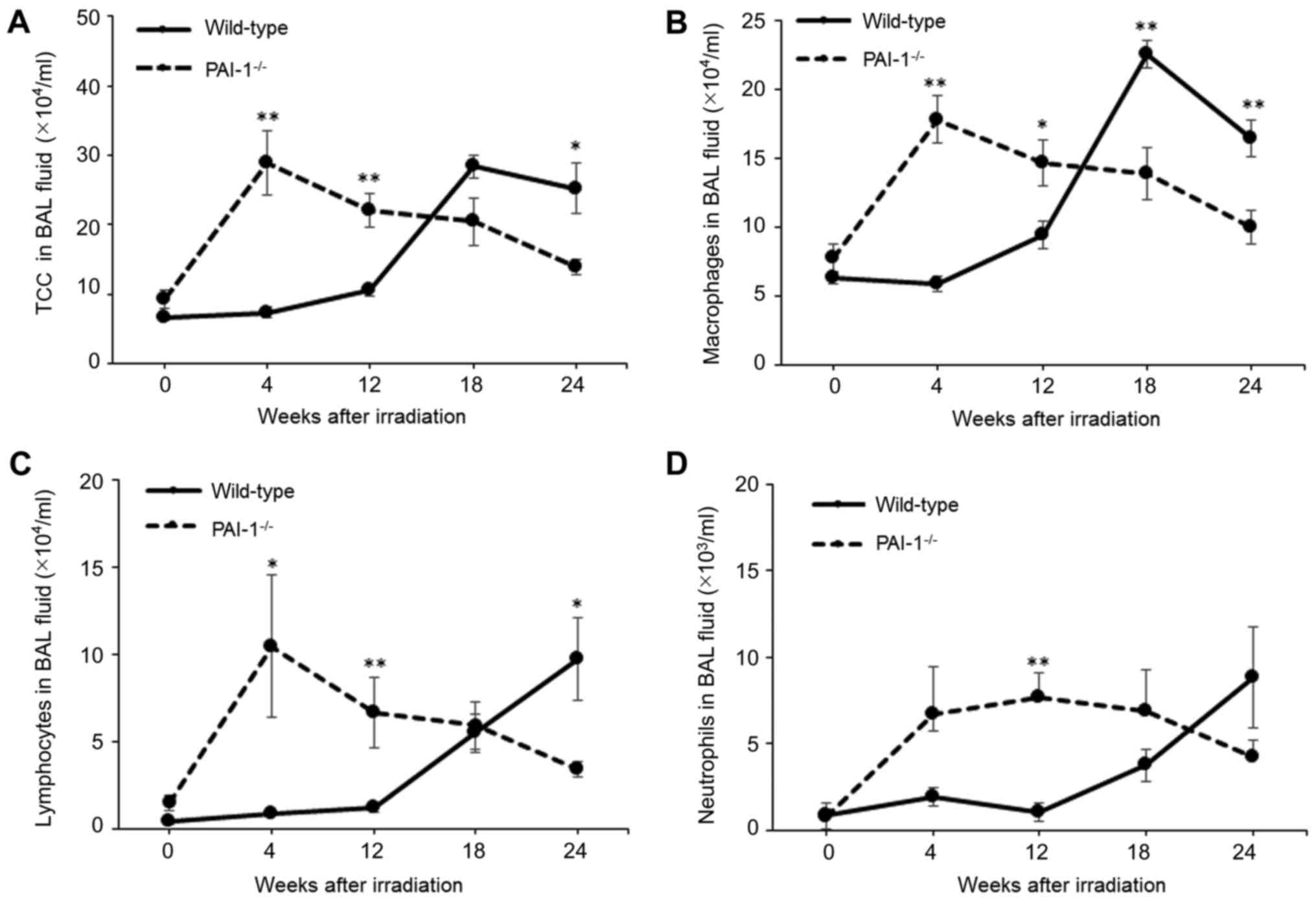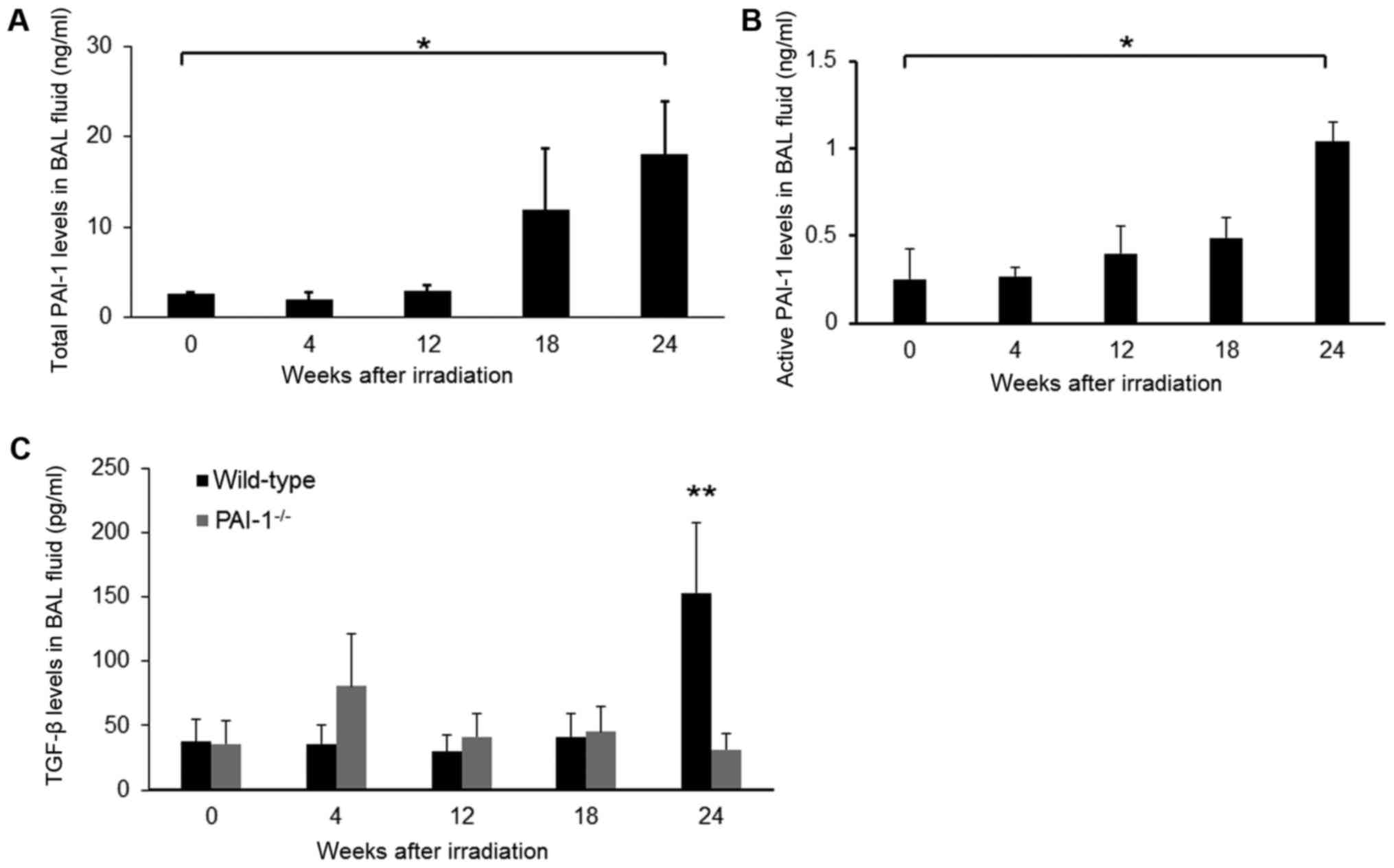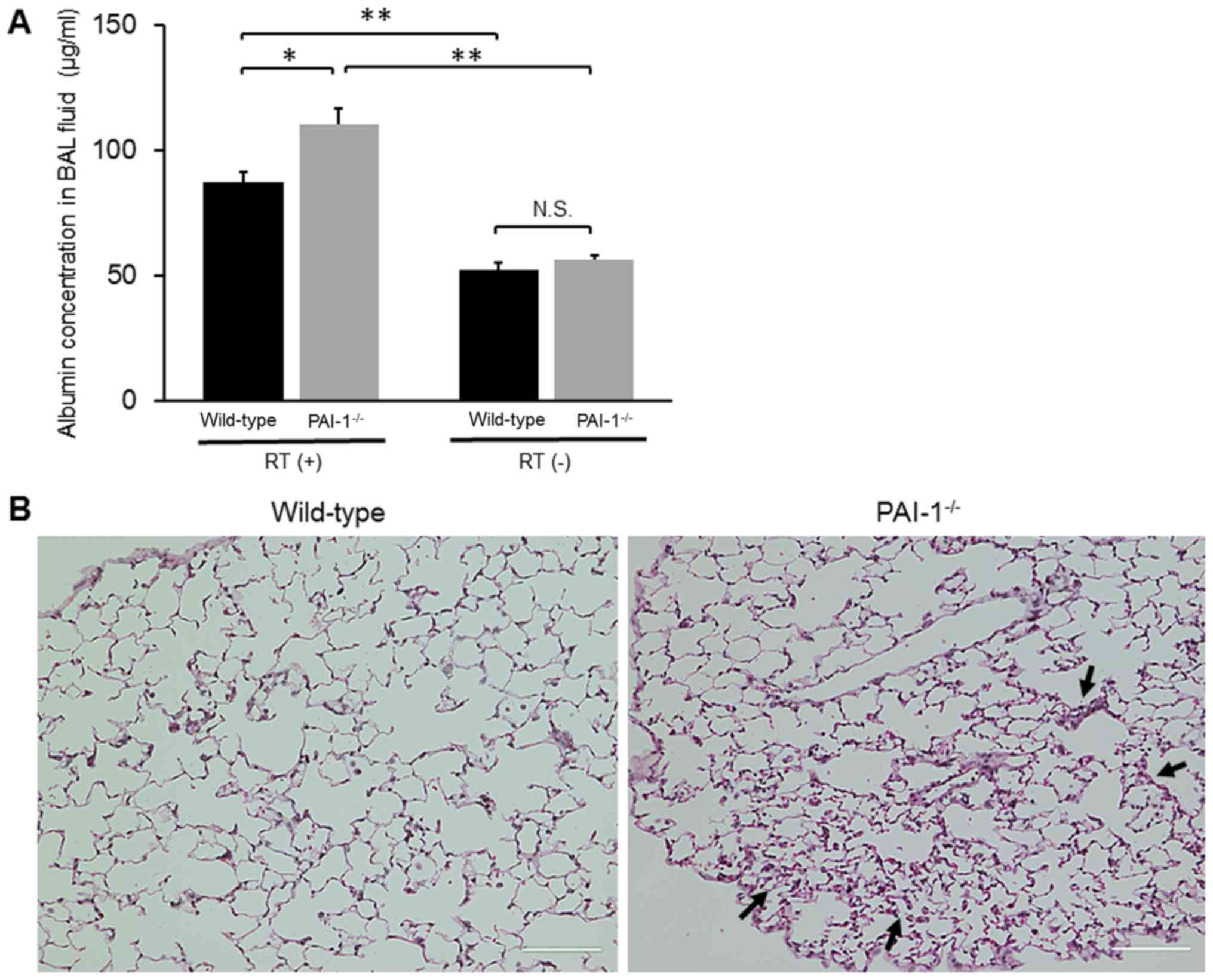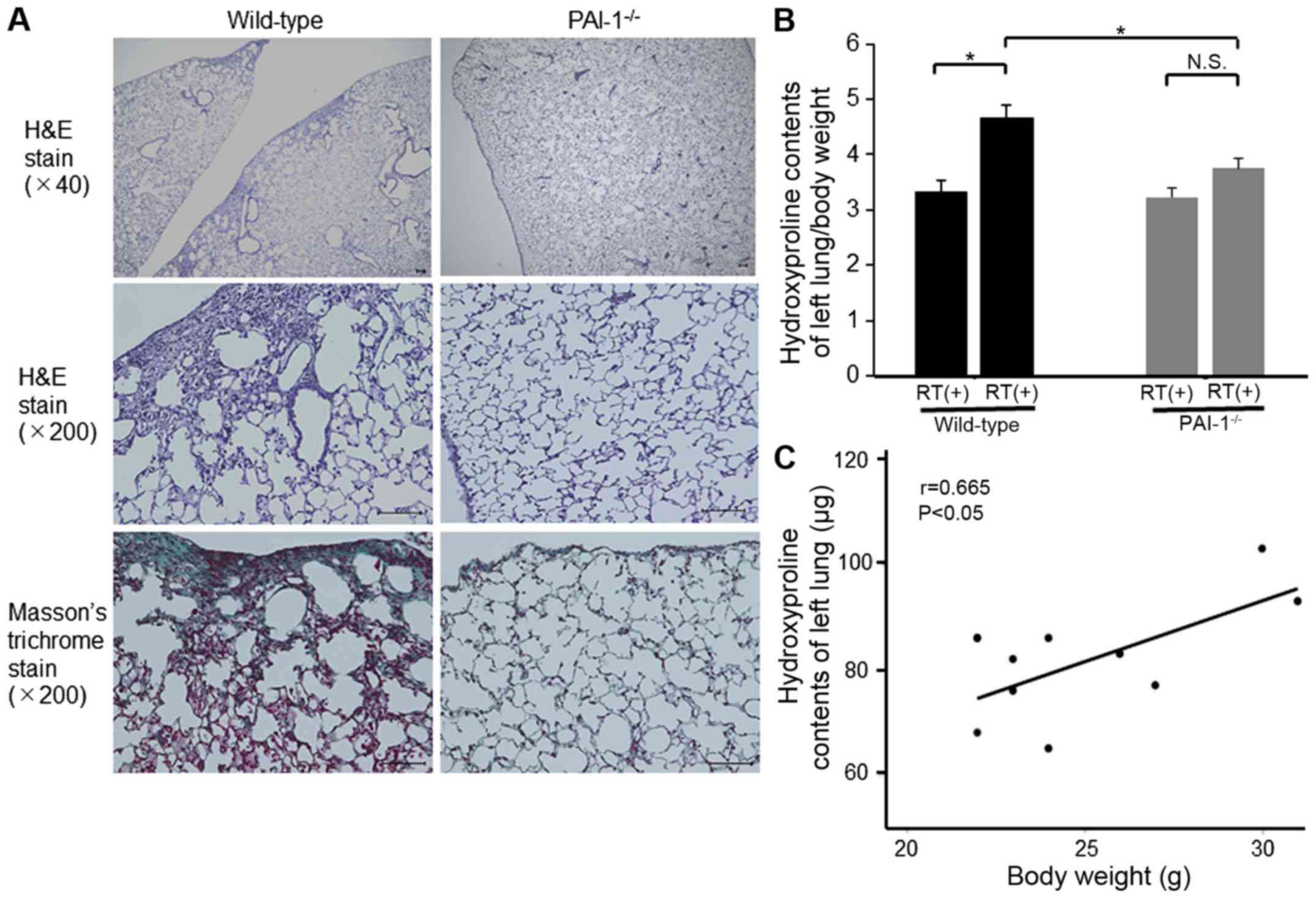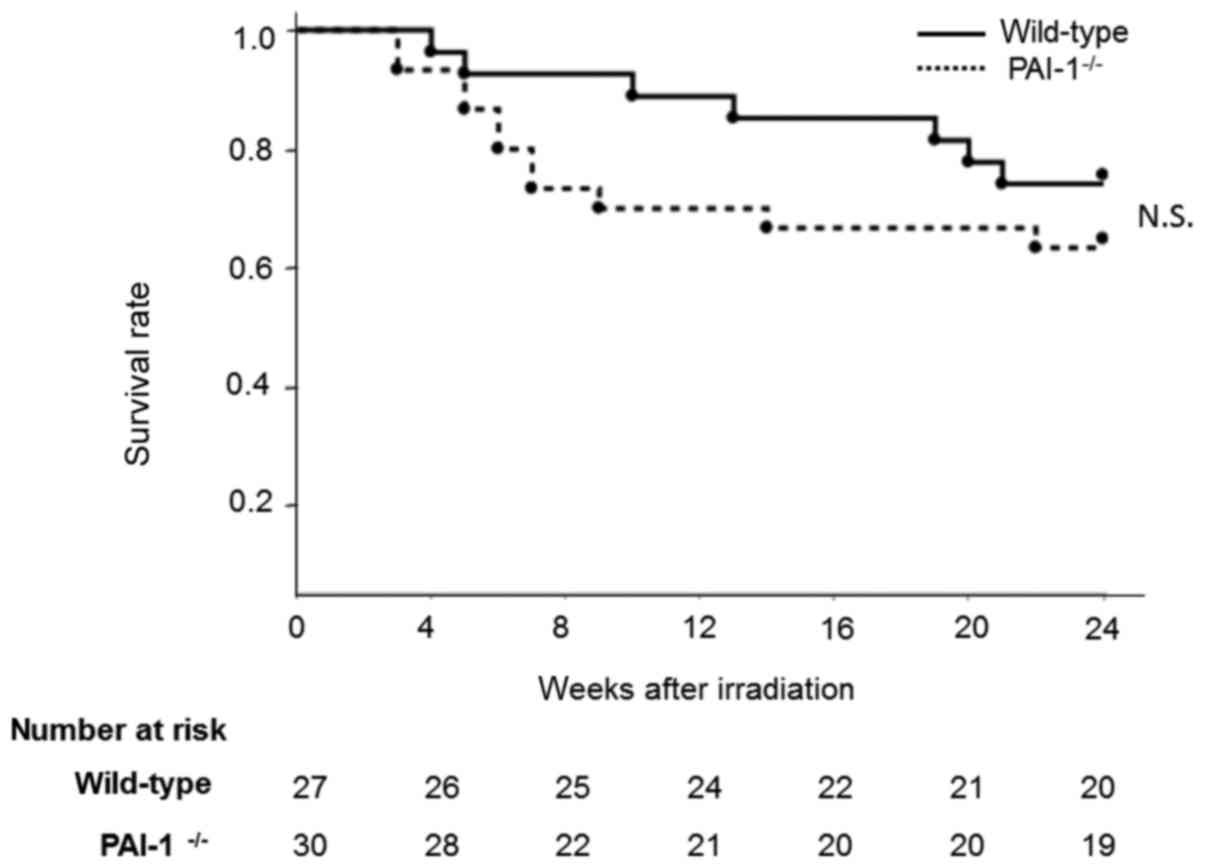|
1
|
Ding NH, Li JJ and Sun LQ: Molecular
mechanisms and treatment of radiation-induced lung fibrosis. Curr
Drug Targets. 14:1347–1356. 2013. View Article : Google Scholar : PubMed/NCBI
|
|
2
|
Madani I, De Ruyck K, Goeminne H, De Neve
W, Thierens H and Van Meerbeeck J: Predicting risk of
radiation-induced lung injury. J Thorac Oncol. 2:864–874. 2007.
View Article : Google Scholar : PubMed/NCBI
|
|
3
|
Rübe CE, Uthe D, Schmid KW, Richter KD,
Wessel J, Schuck A, Willich N and Rube C: Dose-dependent induction
of transforming growth factor beta (TGF-beta) in the lung tissue of
fibrosis-prone mice after thoracic irradiation. Int J Radiat Oncol
Biol Phys. 47:1033–1042. 2000. View Article : Google Scholar : PubMed/NCBI
|
|
4
|
Carver JR, Shapiro CL, Ng A, Jacobs L,
Schwartz C, Virgo KS, Hagerty KL, Somerfield MR and Vaughn DJ: ASCO
Cancer Survivorship Expert Panel: American Society of Clinical
Oncology clinical evidence review on the ongoing care of adult
cancer survivors: Cardiac and pulmonary late effects. J Clin Oncol.
25:3991–4008. 2007. View Article : Google Scholar : PubMed/NCBI
|
|
5
|
Rubin P, Johnston CJ, Williams JP,
McDonald S and Finkelstein JN: A perpetual cascade of cytokines
postirradiation leads to pulmonary fibrosis. Int J Radiat Oncol
Biol Phys. 33:99–109. 1995. View Article : Google Scholar : PubMed/NCBI
|
|
6
|
Kohler HP and Grant PJ:
Plasminogen-activator inhibitor type 1 and coronary artery disease.
N Engl J Med. 342:1792–1801. 2000. View Article : Google Scholar : PubMed/NCBI
|
|
7
|
Ghosh AK and Vaughan DE: PAI-1 in tissue
fibrosis. J Cell Physiol. 227:493–507. 2012. View Article : Google Scholar : PubMed/NCBI
|
|
8
|
Iwaki T, Urano T and Umemura K: PAI-1,
progress in understanding the clinical problem and its aetiology.
Br J Haematol. 157:291–298. 2012. View Article : Google Scholar : PubMed/NCBI
|
|
9
|
Eitzman DT, McCoy RD, Zheng X, Fay WP,
Shen T, Ginsburg D and Simon RH: Bleomycin-induced pulmonary
fibrosis in transgenic mice that either lack or overexpress the
murine plasminogen activator inhibitor-1 gene. J Clin Invest.
97:232–237. 1996. View Article : Google Scholar : PubMed/NCBI
|
|
10
|
Hattori N, Degen JL, Sisson TH, Liu H,
Moore BB, Pandrangi RG, Simon RH and Drew AF: Bleomycin-induced
pulmonary fibrosis in fibrinogen-null mice. J Clin Invest.
106:1341–1350. 2000. View
Article : Google Scholar : PubMed/NCBI
|
|
11
|
Senoo T, Hattori N, Tanimoto T, Furonaka
M, Ishikawa N, Fujitaka K, Haruta Y, Murai H, Yokoyama A and Kohno
N: Suppression of plasminogen activator inhibitor-1 by RNA
interference attenuates pulmonary fibrosis. Thorax. 65:334–340.
2010. View Article : Google Scholar : PubMed/NCBI
|
|
12
|
Omori K, Hattori N, Senoo T, Takayama Y,
Masuda T, Nakashima T, Iwamoto H, Fujitaka K, Hamada H and Kohno N:
Inhibition of plasminogen activator inhibitor-1 attenuates
transforming growth factor-β-dependent epithelial mesenchymal
transition and differentiation of fibroblasts to myofibroblasts.
PLoS One. 11:e01489692016. View Article : Google Scholar : PubMed/NCBI
|
|
13
|
Hageman J, Eggen BJ, Rozema T, Damman K,
Kampinga HH and Coppes RP: Radiation and transforming growth
factor-beta cooperate in transcriptional activation of the
profibrotic plasminogen activator inhibitor-1 gene. Clin Cancer
Res. 11:5956–5964. 2005. View Article : Google Scholar : PubMed/NCBI
|
|
14
|
Zhao W, Spitz DR, Oberley LW and Robbins
ME: Redox modulation of the pro-fibrogenic mediator plasminogen
activator inhibitor-1 following ionizing radiation. Cancer Res.
61:5537–5543. 2001.PubMed/NCBI
|
|
15
|
Brown NJ, Nakamura S, Ma L, Nakamura I,
Donnert E, Freeman M, Vaughan DE and Fogo AB: Aldosterone modulates
plasminogen activator inhibitor-1 and glomerulosclerosis in vivo.
Kidney Int. 58:1219–1227. 2000. View Article : Google Scholar : PubMed/NCBI
|
|
16
|
Oikawa T, Freeman M, Lo W, Vaughan DE and
Fogo A: Modulation of plasminogen activator inhibitor-1 in vivo: A
new mechanism for the anti-fibrotic effect of renin-angiotensin
inhibition. Kidney Int. 51:164–172. 1997. View Article : Google Scholar : PubMed/NCBI
|
|
17
|
Vozenin-Brotons MC, Milliat F, Linard C,
Strup C, François A, Sabourin JC, Lasser P, Lusinchi A, Deutsch E,
Girinsky T, et al: Gene expression profile in human late radiation
enteritis obtained by high-density cDNA array hybridization. Radiat
Res. 161:299–311. 2004. View
Article : Google Scholar : PubMed/NCBI
|
|
18
|
Suzuki N, Ohta K, Horiuchi T, Takizawa H,
Ueda T, Kuwabara M, Shiga J and Ito K: T lymphocytes and
silica-induced pulmonary inflammation and fibrosis in mice. Thorax.
51:1036–1042. 1996. View Article : Google Scholar : PubMed/NCBI
|
|
19
|
Chung EJ, McKay-Corkum G, Chung S, White
A, Scroggins BT, Mitchell JB, Mulligan-Kehoe MJ and Citrin D:
Truncated plasminogen activator inhibitor-1 protein protects from
pulmonary fibrosis mediated by irradiation in a murine model. Int J
Radiat Oncol Biol Phys. 94:1163–1172. 2016. View Article : Google Scholar : PubMed/NCBI
|
|
20
|
Lee JG, Shim S, Kim MJ, Myung JK, Jang WS,
Bae CH, Lee SJ, Kim KM, Jin YW, Lee SS and Park S: Pentoxifylline
regulates plasminogen activator inhibitor-1 expression and protein
kinase A phosphorylation in radiation-induced lung fibrosis. Biomed
Res Int. 2017:12792802017.PubMed/NCBI
|
|
21
|
Travis EL, Rachakonda G, Zhou X, Korhonen
K, Sekhar KR, Biswas S and Freeman ML: NRF2 deficiency reduces life
span of mice administered thoracic irradiation. Free Radic Biol
Med. 51:1175–1183. 2011. View Article : Google Scholar : PubMed/NCBI
|
|
22
|
Anscher MS, Thrasher B, Zgonjanin L,
Rabbani ZN, Corbley MJ, Fu K, Sun L, Lee WC, Ling LE and Vujaskovic
Z: Small molecular inhibitor of transforming growth factor-beta
protects against development of radiation-induced lung injury. Int
J Radiat Oncol Biol Phys. 71:829–837. 2008. View Article : Google Scholar : PubMed/NCBI
|
|
23
|
Flechsig P, Dadrich M, Bickelhaupt S,
Jenne J, Hauser K, Timke C, Peschke P, Hahn EW, Gröne HJ, Yingling
J, et al: LY2109761 attenuates radiation-induced pulmonary murine
fibrosis via reversal of TGF-β and BMP-associated proinflammatory
and proangiogenic signals. Clin Cancer Res. 18:3616–3627. 2012.
View Article : Google Scholar : PubMed/NCBI
|
|
24
|
Liu RM: Oxidative stress, plasminogen
activator inhibitor 1, and lung fibrosis. Antioxid Redox Signal.
10:303–319. 2008. View Article : Google Scholar : PubMed/NCBI
|
|
25
|
Schultze-Mosgau S, Kopp J, Thorwarth M,
Rödel F, Melnychenko I, Grabenbauer GG, Amann K and Wehrhan F:
Plasminogen activator inhibitor-I-related regulation of procollagen
I (alpha1 and alpha2) by antitransforming growth factor-beta1
treatment during radiation-impaired wound healing. Int J Radiat
Oncol Biol Phys. 64:280–288. 2006. View Article : Google Scholar : PubMed/NCBI
|
|
26
|
Seo JY, Park J, Yu MR, Kim YS, Ha H and
Lee HB: Positive feedback loop between plasminogen activator
inhibitor-1 and transforming growth factor-beta1 during renal
fibrosis in diabetes. Am J Nephrol. 30:481–490. 2009. View Article : Google Scholar : PubMed/NCBI
|
|
27
|
Nicholas SB, Aguiniga E, Ren Y, Kim J,
Wong J, Govindarajan N, Noda M, Wang W, Kawano Y, Collins A and
Hsueh WA: Plasminogen activator inhibitor-1 deficiency retards
diabetic nephropathy. Kidney Int. 67:1297–1307. 2005. View Article : Google Scholar : PubMed/NCBI
|
|
28
|
Allen GB, Cloutier ME, Larrabee YC,
Tetenev K, Smiley ST and Bates JH: Neither fibrin nor plasminogen
activator inhibitor-1 deficiency protects lung function in a mouse
model of acute lung injury. Am J Physiol Lung Cell Mol Physiol.
296:L277–L285. 2009. View Article : Google Scholar : PubMed/NCBI
|
|
29
|
Huang Y, Zhang W, Yu F and Gao F: The
cellular and molecular mechanism of radiation-induced lung injury.
Med Sci Monit. 23:3446–3450. 2017. View Article : Google Scholar : PubMed/NCBI
|
|
30
|
Sgalla G, Iovene B, Calvello M, Ori M,
Varone F and Richeldi L: Idiopathic pulmonary fibrosis:
Pathogenesis and management. Respir Res. 19:322018. View Article : Google Scholar : PubMed/NCBI
|
|
31
|
Betensley A, Sharif R and Karamichos D: A
systematic review of the role of dysfunctional wound healing in the
pathogenesis and treatment of idiopathic pulmonary fibrosis. J Clin
Med. 6:pii: E2. 2016. View Article : Google Scholar : PubMed/NCBI
|
|
32
|
Burman A, Tanjore H and Blackwell TS:
Endoplasmic reticulum stress in pulmonary fibrosis. Matrix Biol.
68–69:355–365. 2018. View Article : Google Scholar
|















